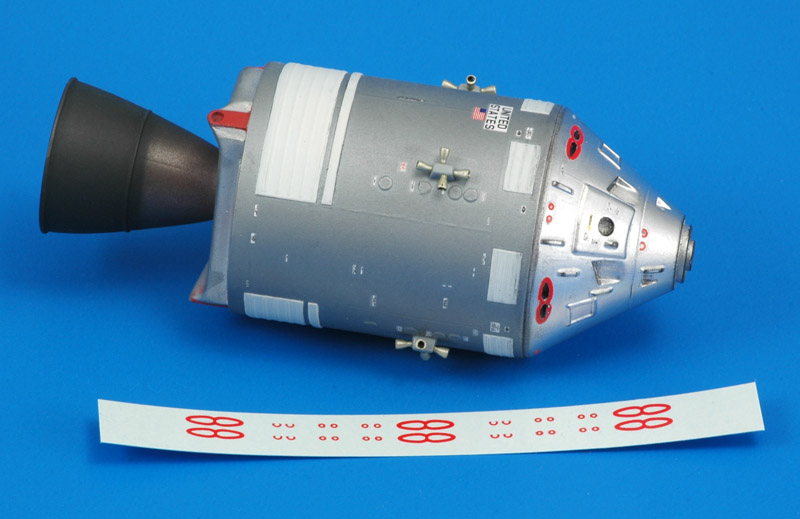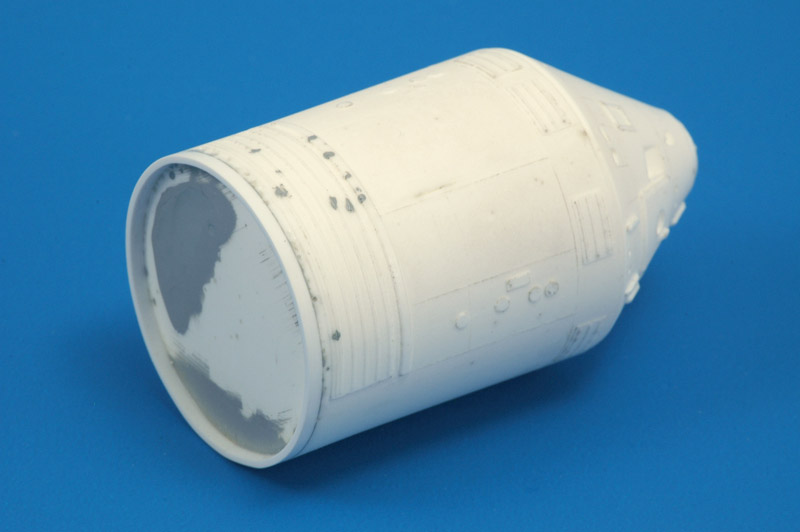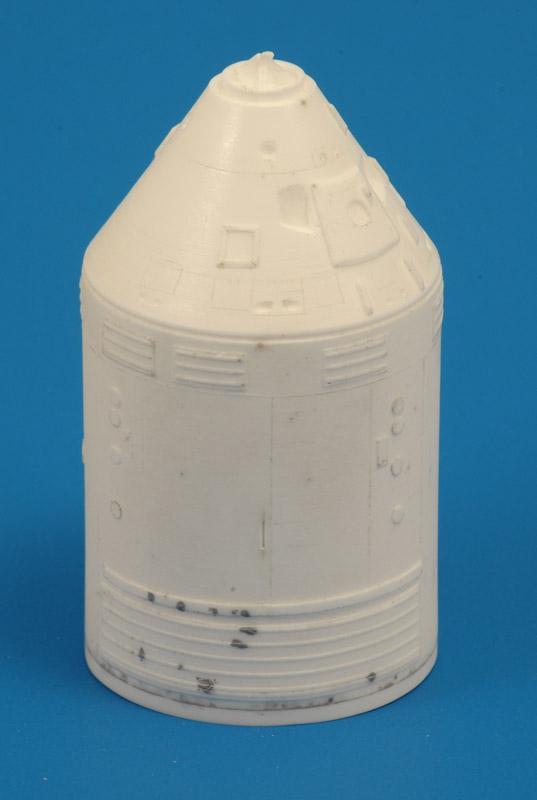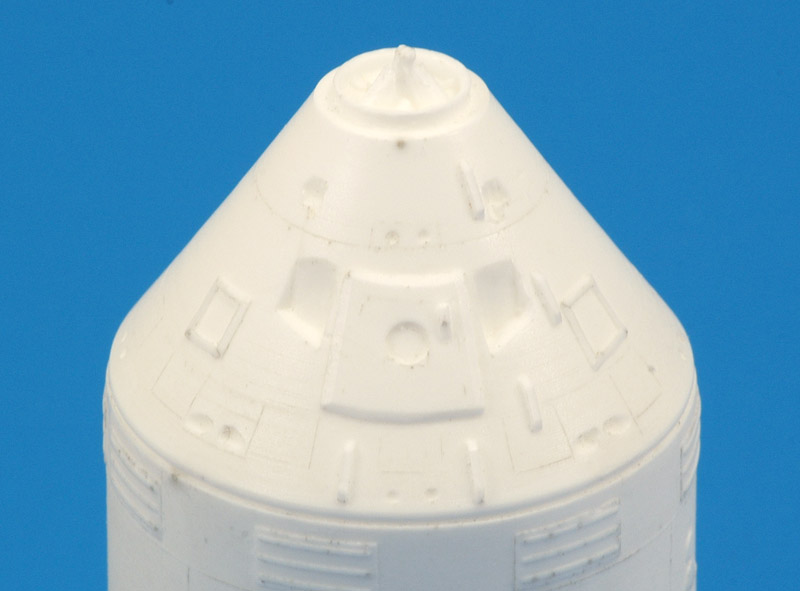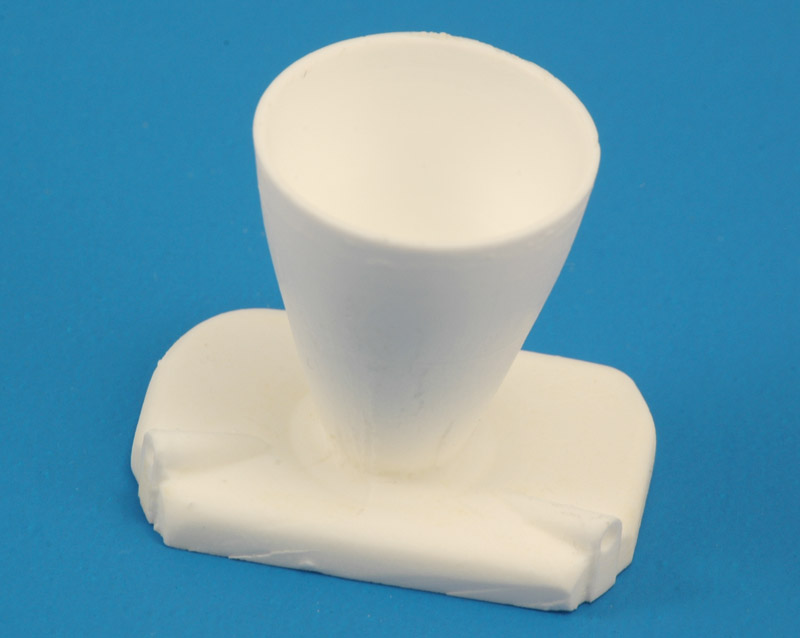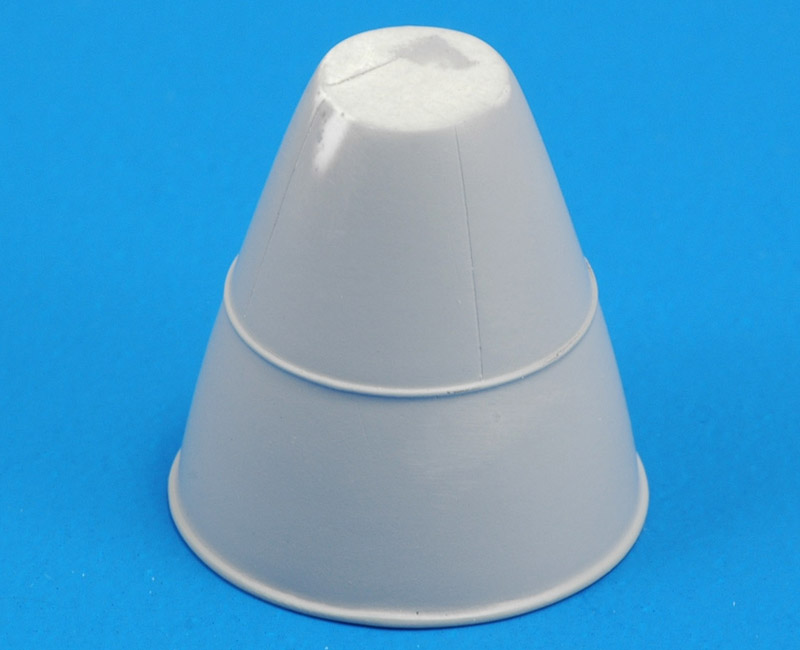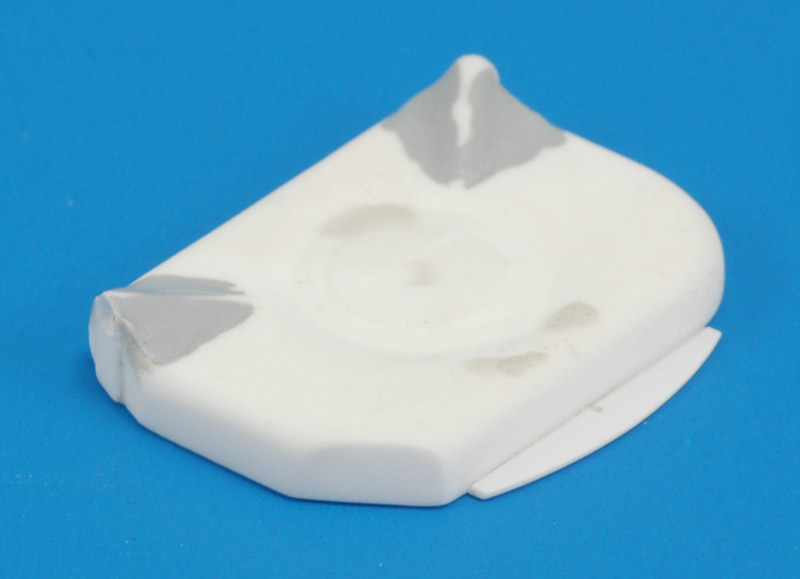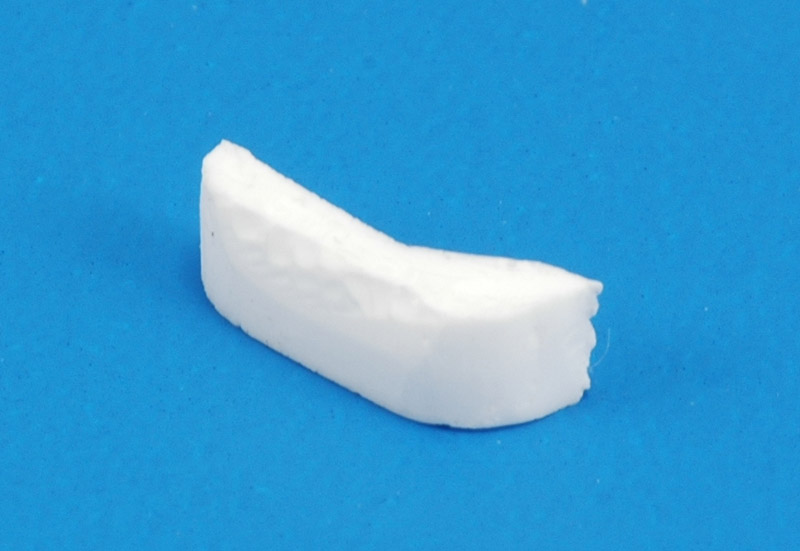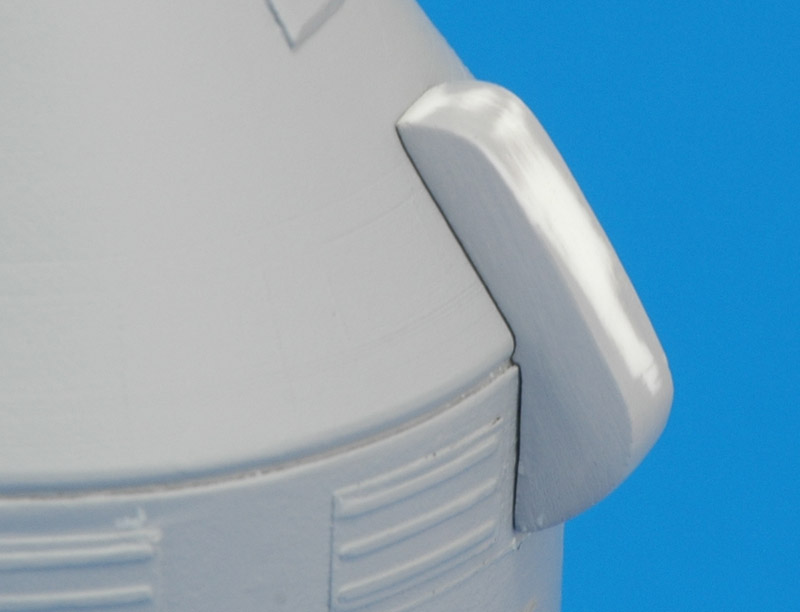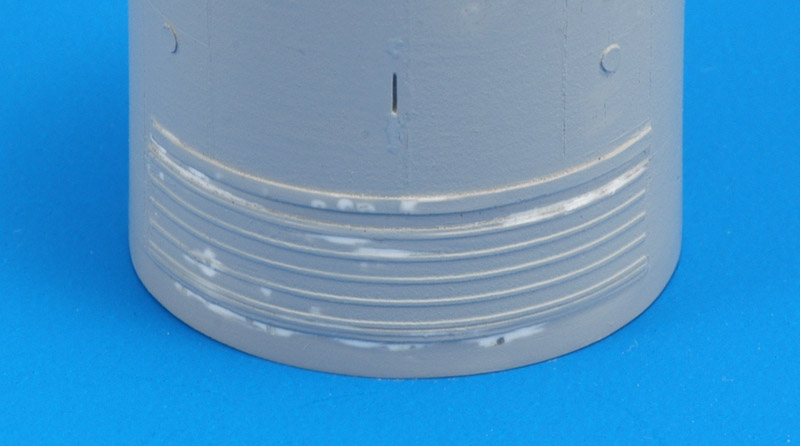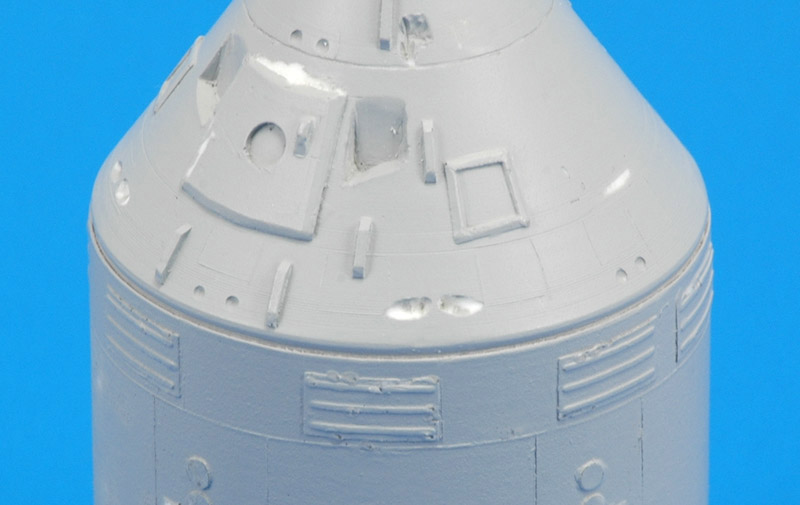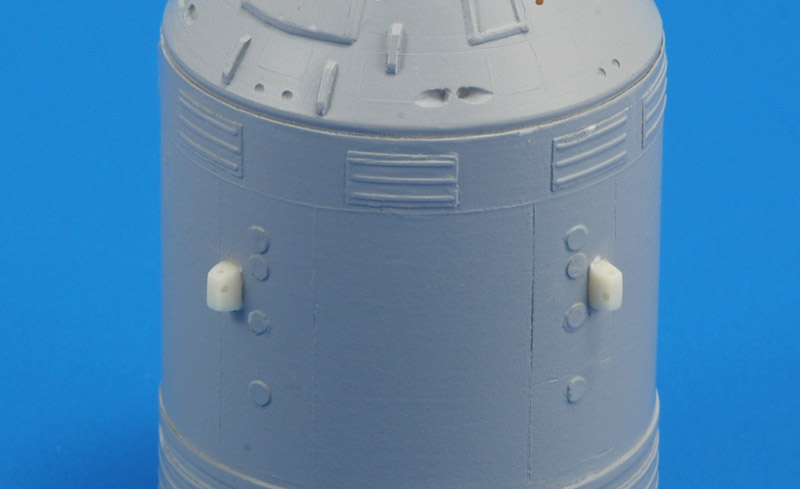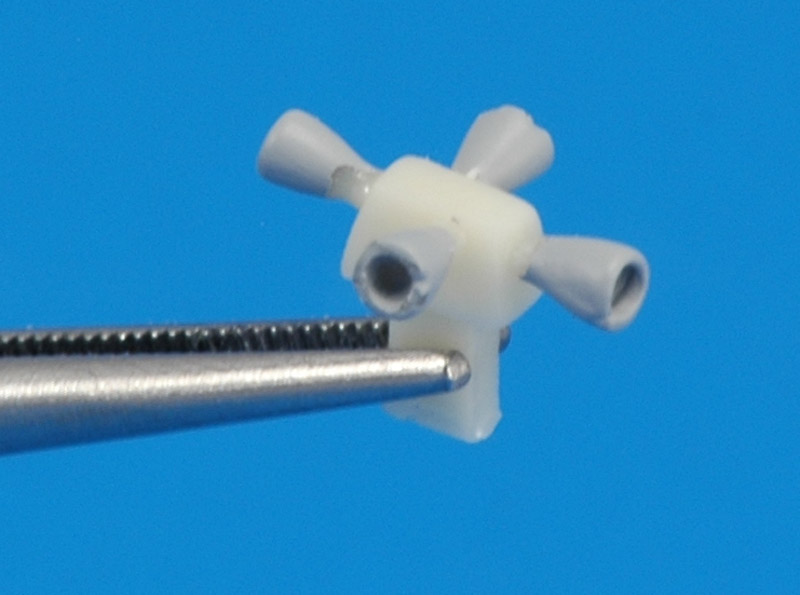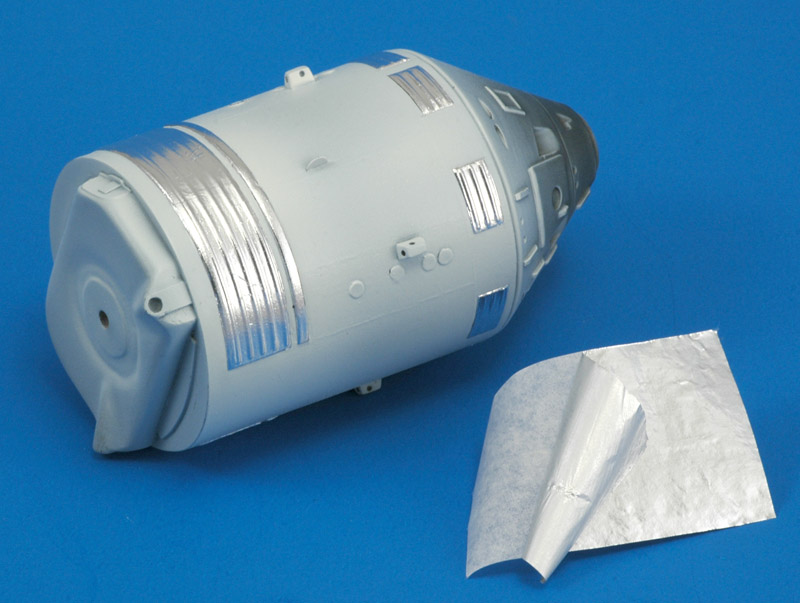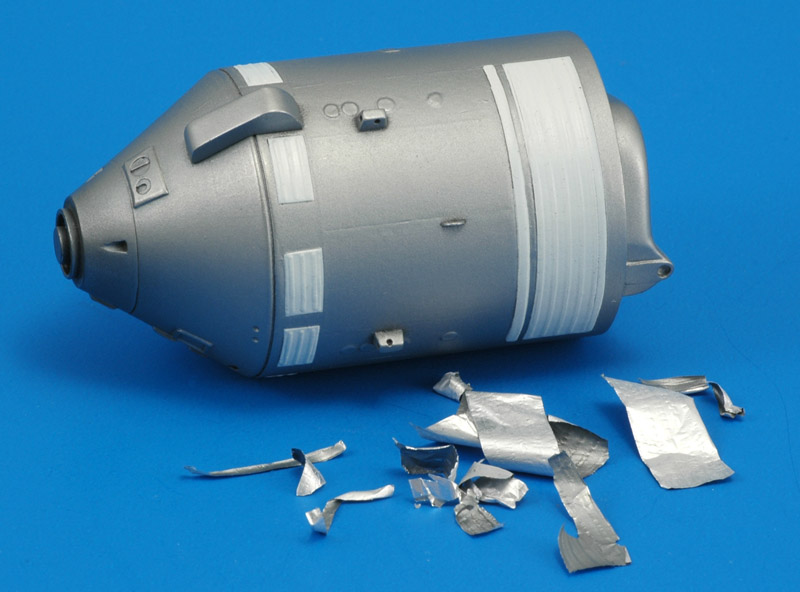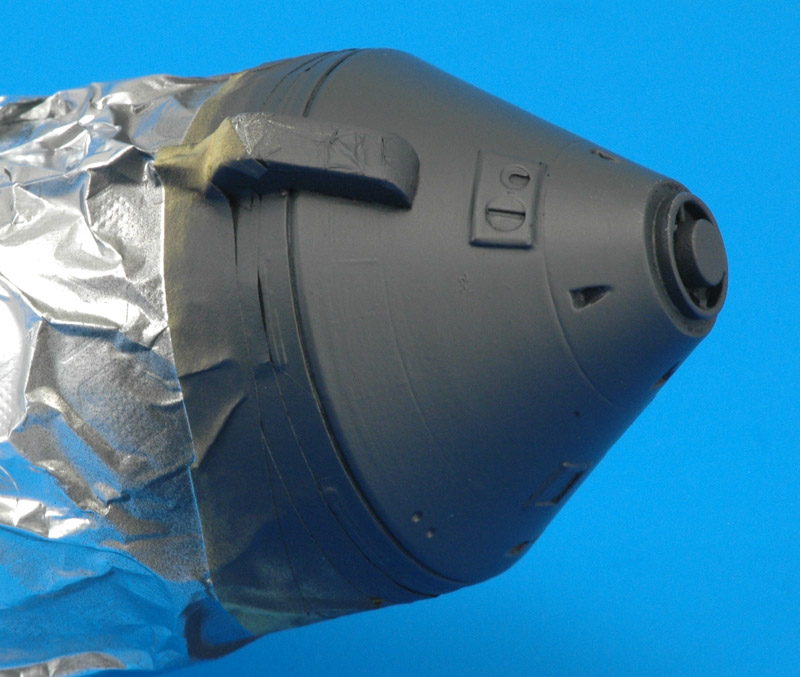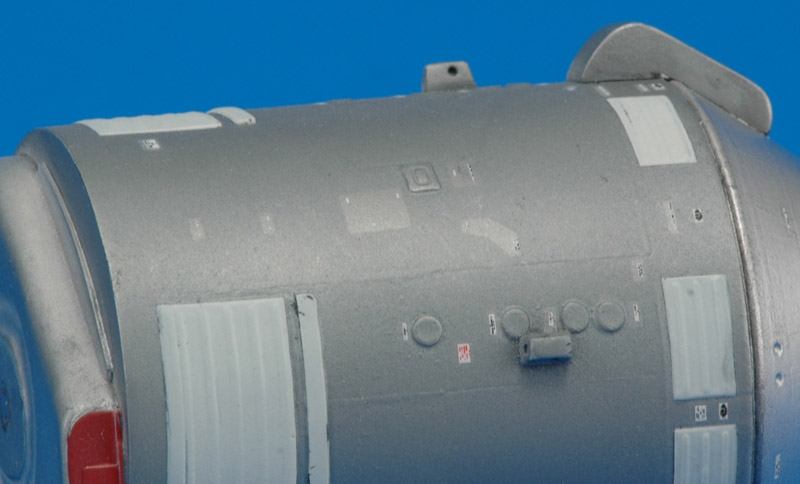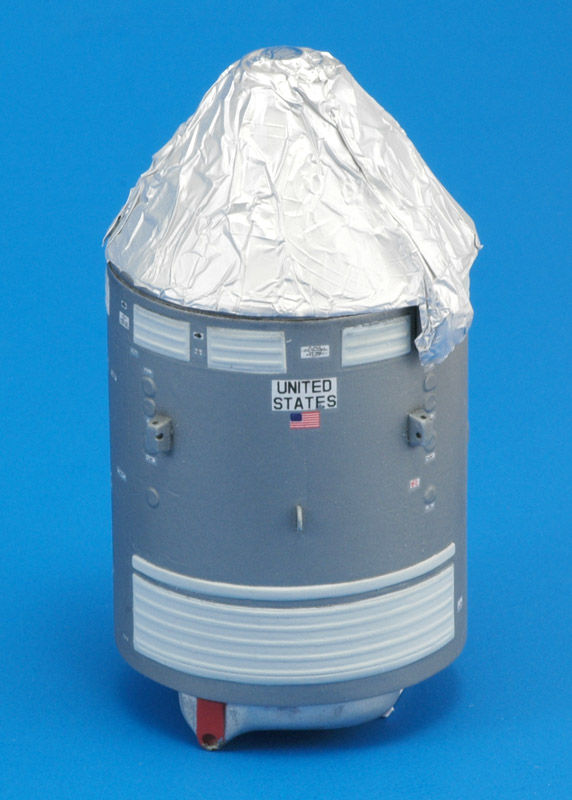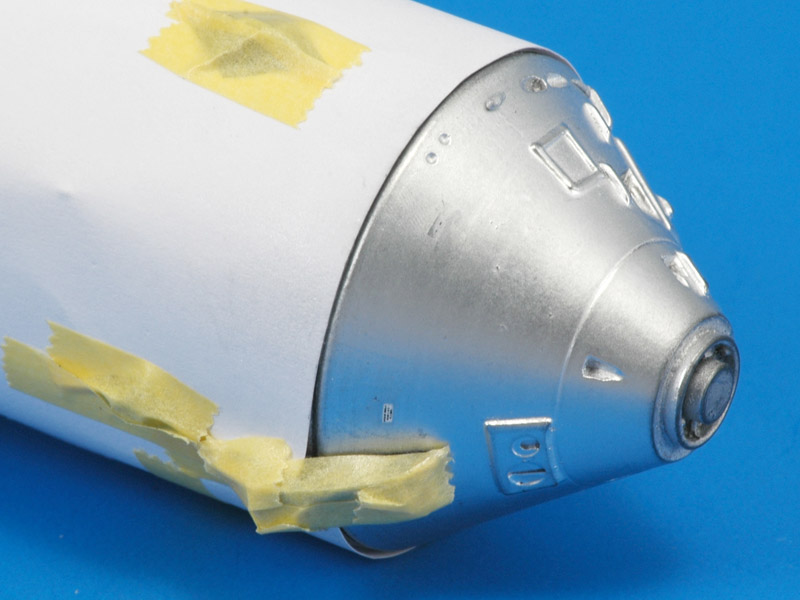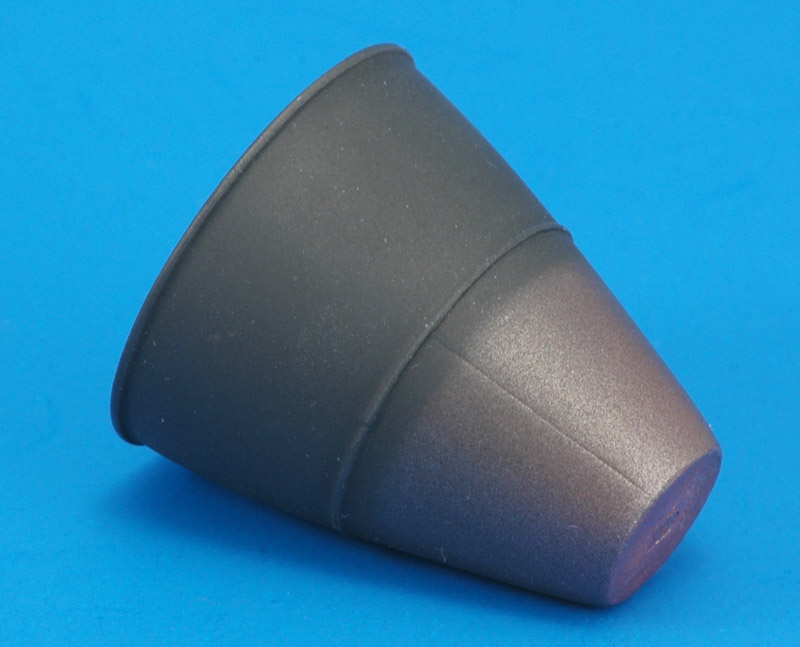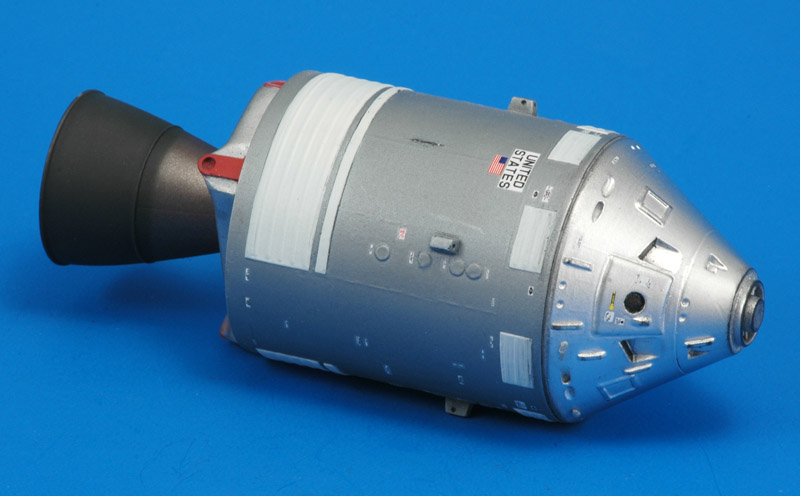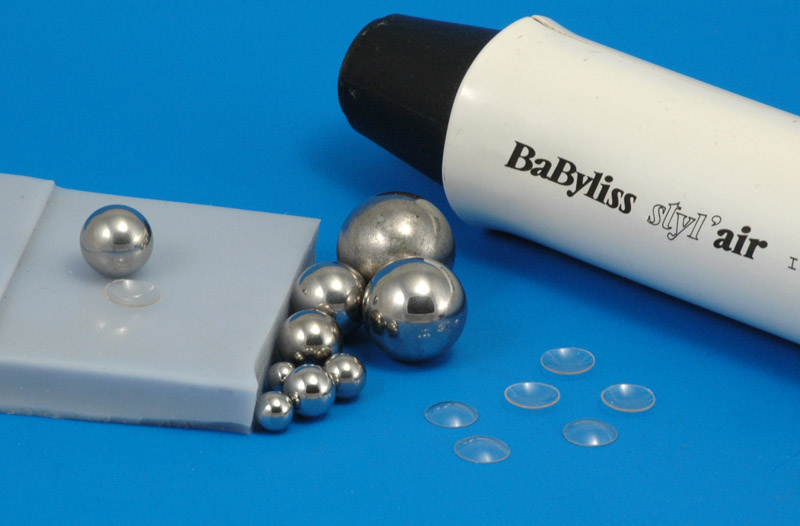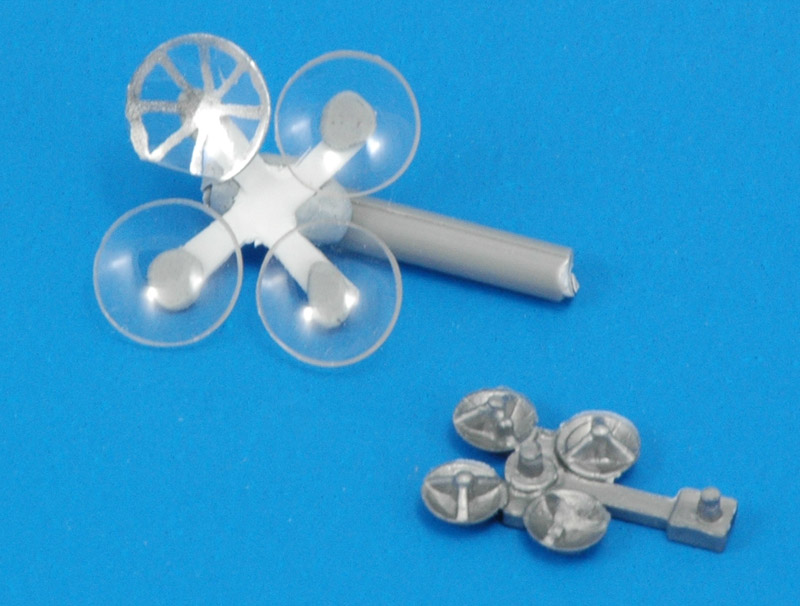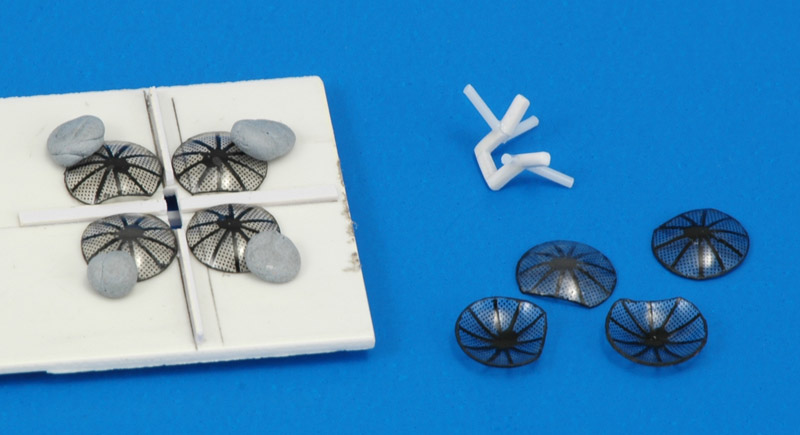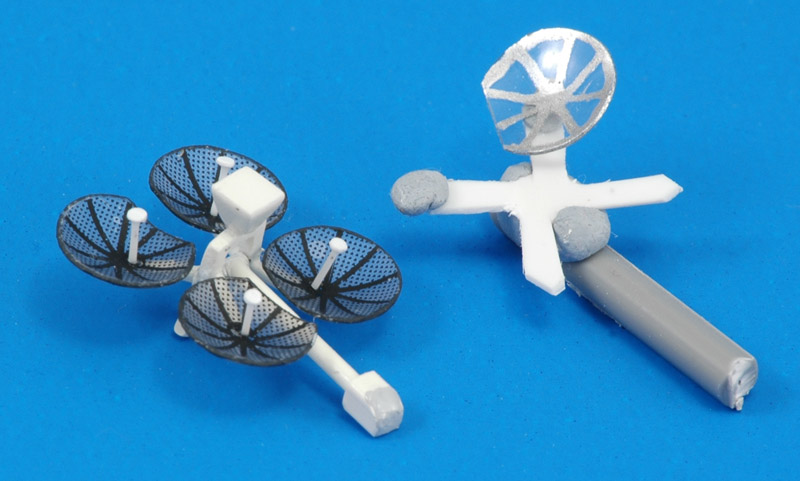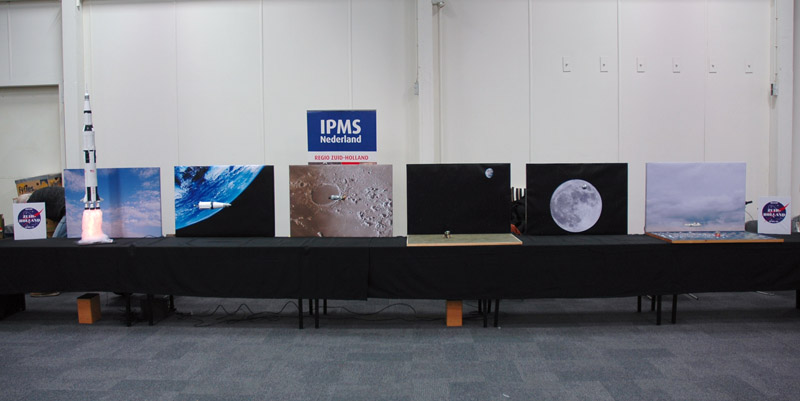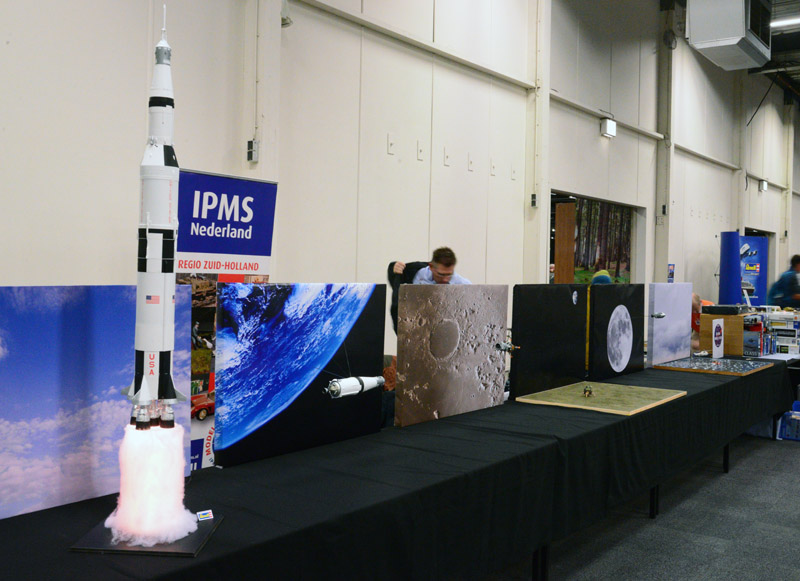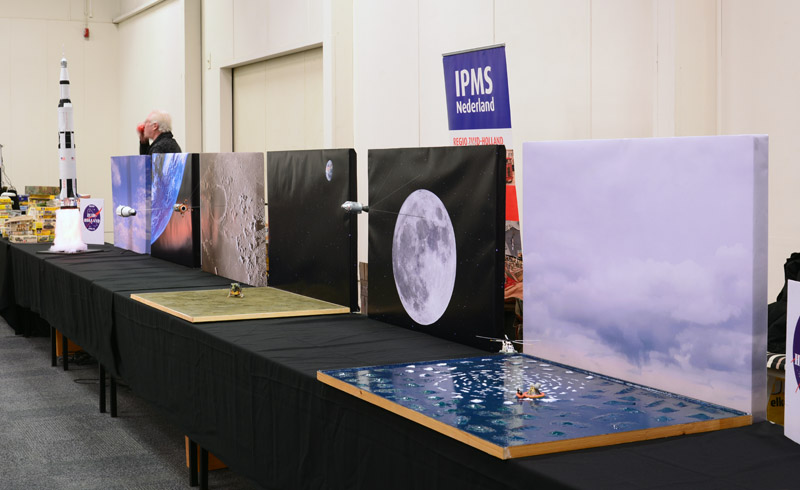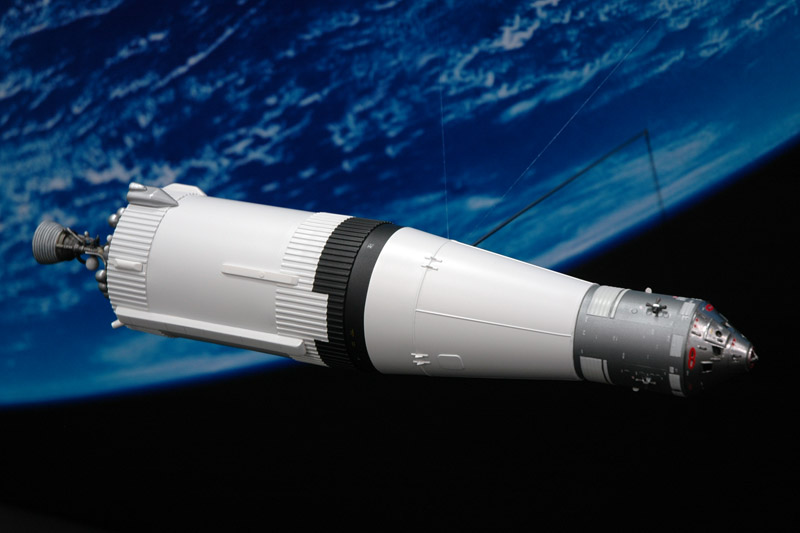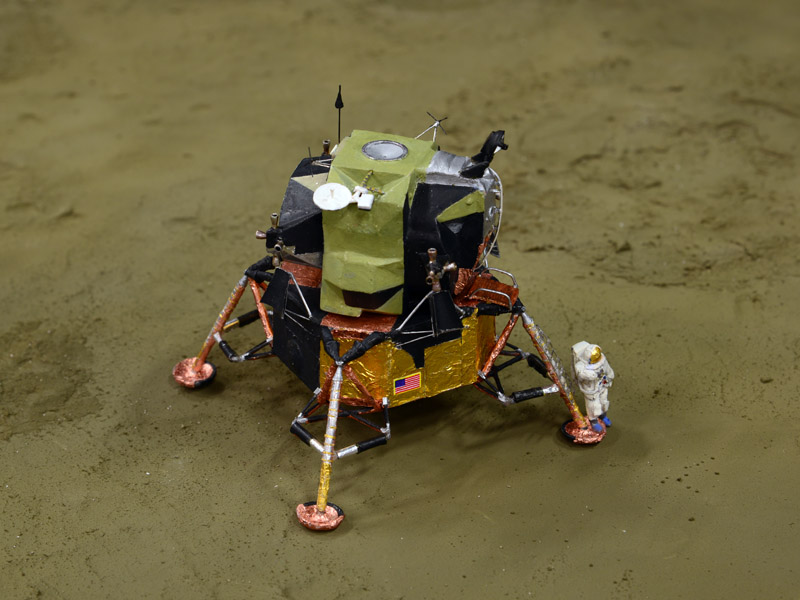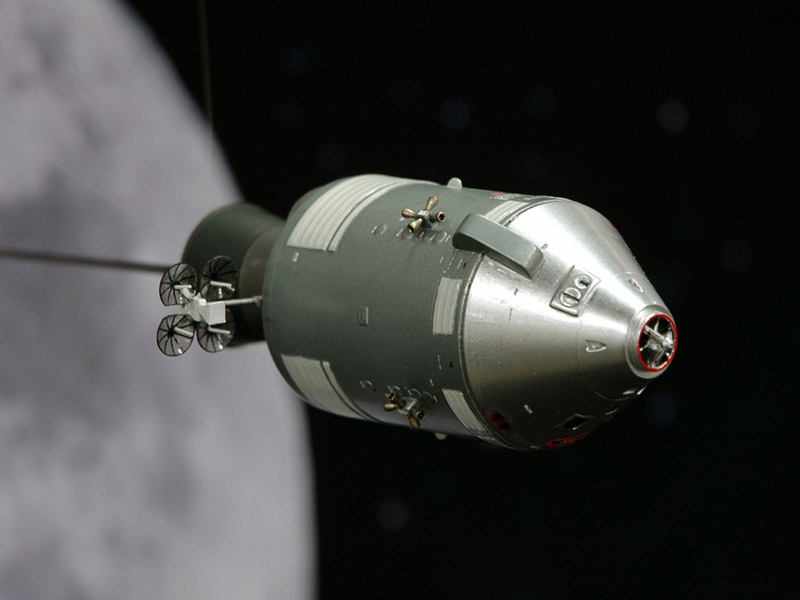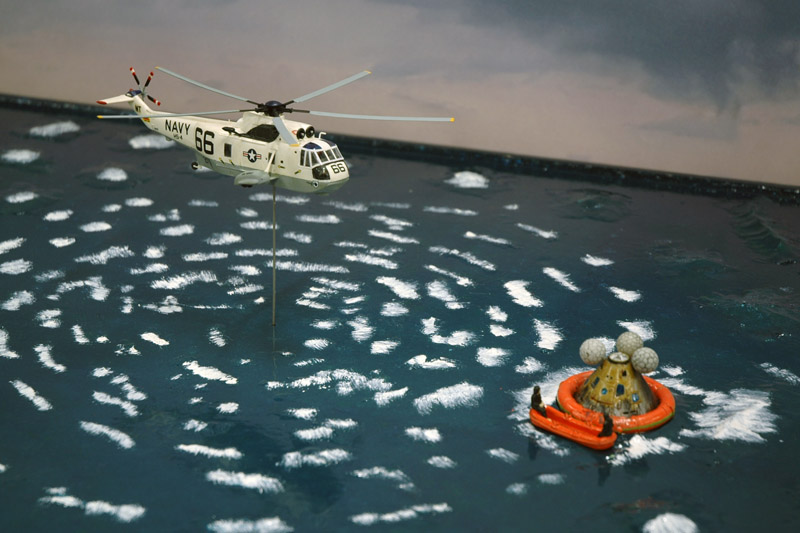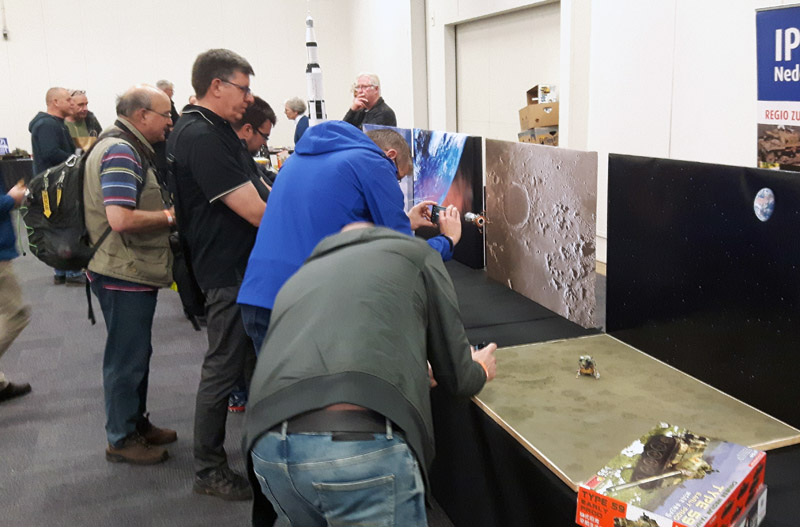The RealSpace 1/96 kit replaces the Revell 1/96 CSM that represents a Block 1 version instead of the Block 2 version of Apollo 11. They have very different detailing on the exterior, so the Revell model is really not suited to represent the Apollo 11 mission.
The kit contains a solid resin main body, the master of which appears to be turned, and the turning marks do become visible when you paint it with metallic paints. The other two resin parts are a combined rocket nozzle plus heat shield, and the umbilical cover. A vacformed part is also included, the Boost Protective Cover. The part listing shows that the RCS nozzles, the mast with parabolic antennas and the decals are not included. The resin parts were cast without vacuum or pressure, and they contain numerous small air bubbles. That makes for a laborious clean-up, as you will see. My example also appeared to be 'short-shot', it was 2 mm too short, stopping right behind the large radiators. Also, the 'scimitar antennas' were broken off from the SM body.
Regarding accuracy, I think overall the accuracy is pretty good. But I was disappointed to see some errors introduced. The main error that jumped at me is the raised entrance hatch of the Command Module. The slanted roll control thruster openings are badly defined, as are the four connections for the escape tower.
All in all I was a bit disappointed. The master model should be cleaned up, the casting should be improved, and extra parts should be supplied. Then it would be a fine kit.
| 
|
